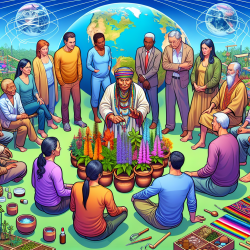The globalization of traditional medicine offers a unique opportunity for practitioners worldwide to enhance their therapeutic skills by integrating ancient wisdom with modern medical practices. The research article "The Globalization of Traditional Medicine in Northern Peru: From Shamanism to Molecules" provides valuable insights into how traditional healing methods can be effectively incorporated into contemporary healthcare settings.
Understanding the Roots of Traditional Medicine
Northern Peru is a region rich in biodiversity and cultural heritage, where traditional medicine has been practiced for centuries. The study conducted in this area highlights the extensive use of medicinal plants by local healers, known as curanderos, who possess a deep understanding of the healing properties of these plants. With over 510 species identified, these plants are used to treat a wide range of health conditions, from infections to psychosomatic disorders.
The Potential of Medicinal Plants
The research confirms that many plants used in traditional Peruvian medicine exhibit antibacterial activity. For instance, ethanolic extracts from several species showed significant efficacy against bacteria like Staphylococcus aureus and Escherichia coli. This finding underscores the potential for these plants to be developed into effective treatments for bacterial infections.
Moreover, the study reveals that traditional preparation methods are mindful of plant toxicity, often opting for water-based extracts over more toxic ethanolic ones. This practice ensures patient safety while maximizing therapeutic benefits.
Challenges and Opportunities
Despite their potential, the sustainability of medicinal plant use is a growing concern. Most species are wild-collected rather than cultivated, raising questions about the long-term viability of this practice. As demand for these plants increases globally, there is an urgent need for sustainable cultivation methods to preserve these valuable resources.
Practitioners are encouraged to explore further research into these traditional remedies and consider their integration into modern healthcare systems. By doing so, they can offer patients a more holistic approach to treatment that respects both scientific advancements and cultural traditions.
Conclusion: Bridging Traditions with Modernity
The integration of traditional medicine into contemporary practice not only enriches therapeutic options but also honors cultural heritage. Practitioners who embrace this approach can provide more comprehensive care that addresses both physical and spiritual well-being.
To read the original research paper, please follow this link: The Globalization of Traditional Medicine in Northern Peru: From Shamanism to Molecules.










